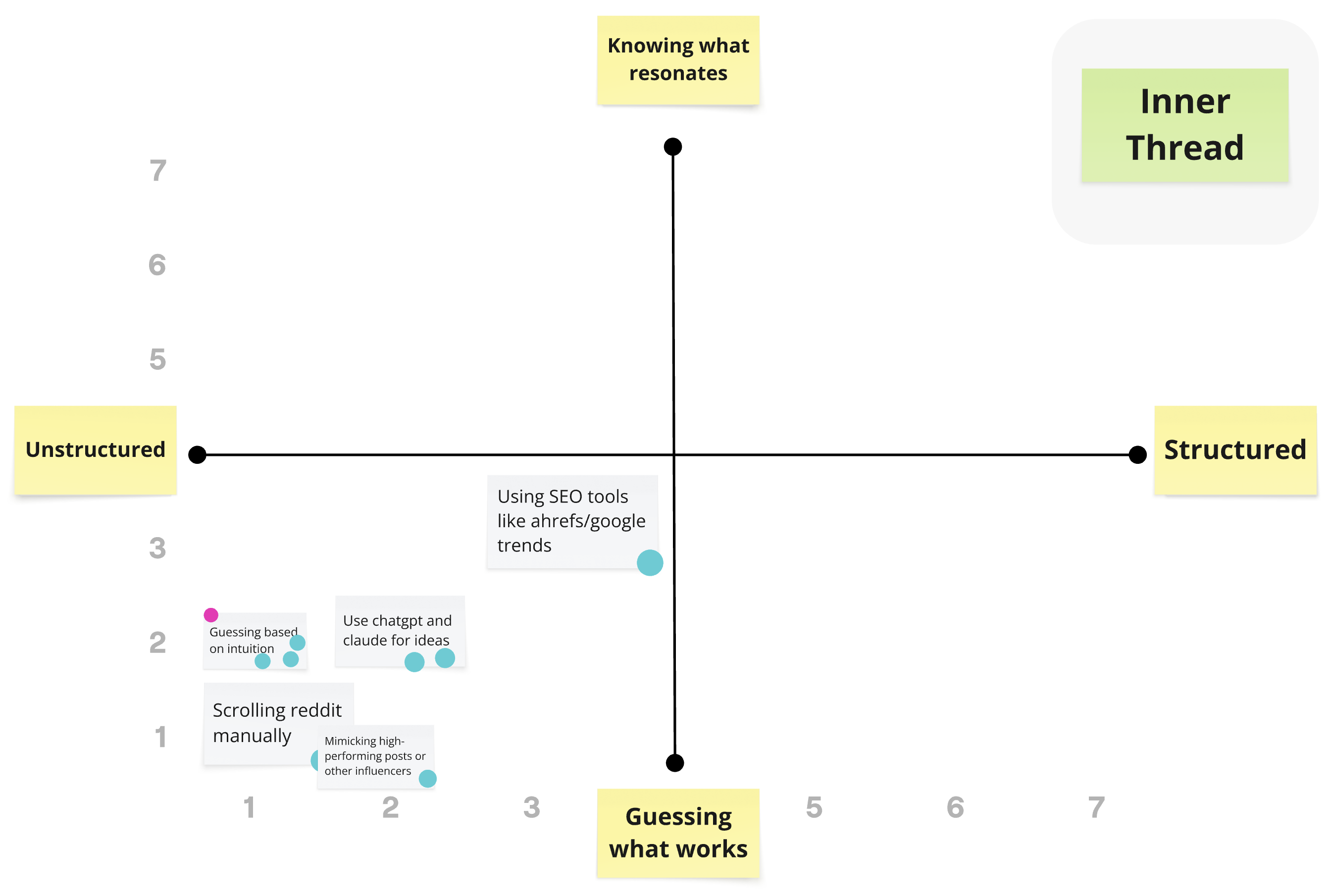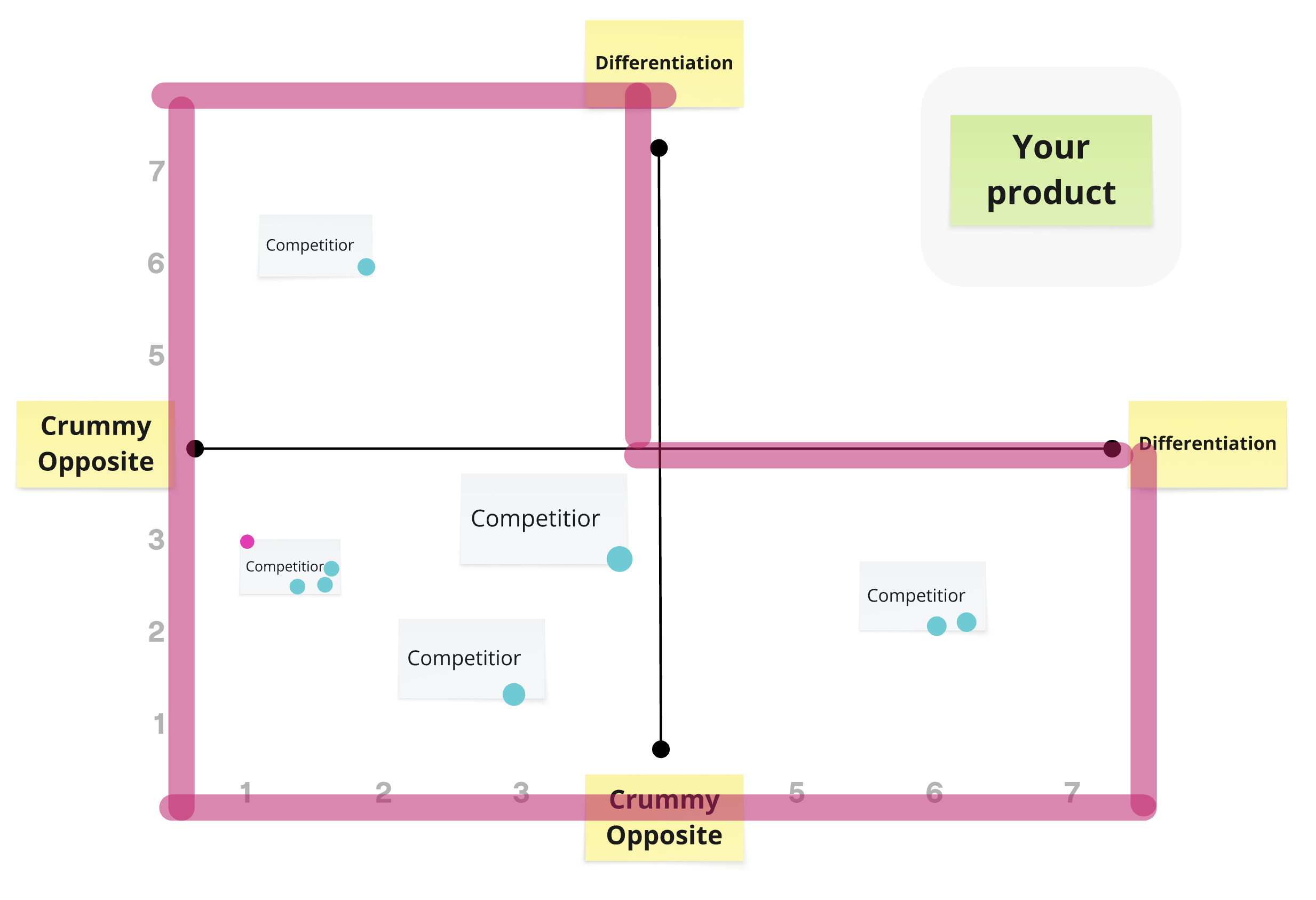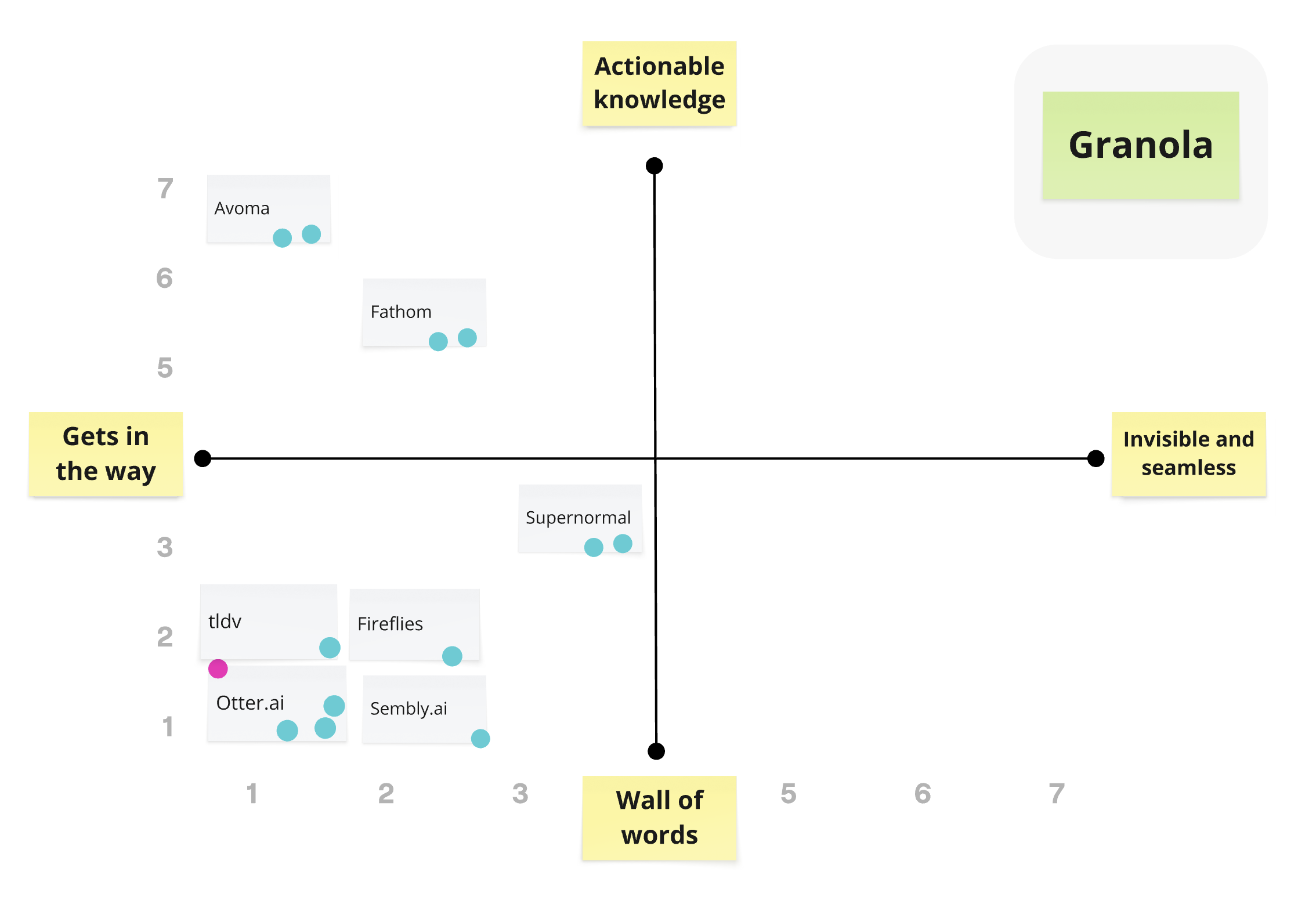Why your product needs to click (before you even start building)
"What makes you different from [Big Company X]?"
At MidFunnel, that question used to send me into a feature comparison spiral. You know the drill - frantically listing all the things your product does similarly (or slightly better) than the established players.
But I’ve learned something recently. In a world where AI makes building easier than ever, just finding a valid pain point may not be enough anymore. If you're explaining feature parity, you've already lost the differentiation game before you even start building.
Feature parity is just another way to say “we don’t need to exist”.
— Jason Fried (@jasonfried) July 22, 2025
Let me share how a surprising workshop changed my entire view on standing out in crowded markets.
The technical founder's differentiation trap
If you're a technical founder, you might be thinking "This feels like busy work. I should just start building." I get it. The allure of diving straight into code is strong. But here's what actually happens when you skip the hard work of being different:
- First, your marketing becomes a graveyard of generic claims. You end up saying things like "we're faster" or "we're more user-friendly" because you never defined what makes you meaningfully different. Your landing page ends up looking like everyone else's with a different logo.
- Then your sales conversations turn into feature comparison death spirals. Without clear differentiation, every call becomes a tedious "yes, we have that too" exercise that leaves potential customers confused about why they should pick you.
- But the real pain? It shows up months later when you're burning through runway trying to find product-market fit. Your users like the product but won't pay for it. Your demos get positive feedback but no follow-up. And slowly, you realize you've built something that works but doesn't matter enough to anyone.
I've seen too many talented technical teams build amazing products that died quiet deaths because they never gave themselves permission to be different. They focused on building better when they should have focused on building different.
How a foundation sprint opened my eyes
I recently ran through something called a foundation sprint (think of it as the prequel to the famous Design Sprint) with my team. It's from Jake Knapp and John Zeratsky's new book "Click."
Their core insight is simple. What makes you different is what makes you click. Sounds obvious, but most of us get this backwards (including me).
The simple exercise that changed our thinking
The workshop had us map competitors on a 2×2 matrix (stay with me, this gets good). But instead of the usual feature comparison, we:
- Listed every way customers currently solve their problem (including manual workarounds)
- Picked 3-5 main competitors (including one "800-pound gorilla" competitor)
- Used sliders to rate where products land on things like speed, intelligence, usability, pricing
- Defined our own unique differentiators (and their opposites)
- Finally, pick two differentiators (one key and one secondary) that set you apart from everyone else.
The magic happened when we plotted everyone together. If we landed in the same spot as competitors? Back to the drawing board. But when we found clear space on the map? That's when things clicked.
Here’s an example for a product I’ve been exploring:

The big idea here is to not let other competitors be in the same top right quadrant as you.
And if they are, try to pick other differentiators that pushes everyone to “Loserville” as Jake Knapp calls it:

Sometimes founders accidentally get this right
The fascinating thing is, some founders nail differentiation without realizing it (or maybe they do?). Usually because they're scratching their own itch and have strong opinions about how things should work.
Take Granola (among many AI meeting note takers like Fathom and Fireflies). They didn't just build another meeting transcription tool - they had a fundamentally different view on how meetings should be captured and processed, informed by their own frustrations with existing approaches.
When customers understand the category so well (meeting transcription in this example), being meaningfully different here actually helps you grow more because you've made what makes you unique, obvious.
- Prospects can easily say, "Oh shit, this works better for me."
- Spread partners or influencers love to talk about you because you’re one-of-a-kind.
It's actually unbelievable how good https://t.co/12pxJ10Q3y is.
— Guillermo Rauch (@rauchg) January 8, 2025
It replaces writing documents. It's the killer user research tool. The ability to "chat with the transcript" to come back to a point that was made is pure gold. There's no going back to pre-granola days.
Here’s what I think Granola’s 2x2 matrix might look like:

Your next step: Map your click before you build
Here's how to start finding your differentiation sweet spot:
- List every way customers currently solve the problem (including manual approaches)
- Pick your top 3-5 competitors (including one dominant player)
- Rate where each solution lands on key attributes (speed, simplicity, etc.)
- Define your unique attributes (and their opposites)
- Plot yourself against competitors until you find clear space
The goal isn't to be "better" - it's to be meaningfully different in a way that matters to customers.
If you're saying "we're like X but better" or "we do everything they do plus..." - you might need to dig deeper.
But for now, remember: in a world where anyone can build, it's not enough to build better. You need to build different.
PS: Curious about running your own foundation sprint? Check out Jake and John's new book "Click." No affiliation, just found it genuinely useful.
